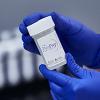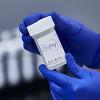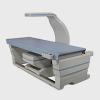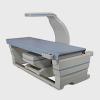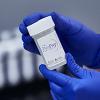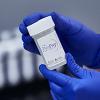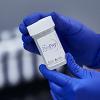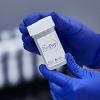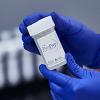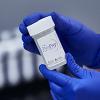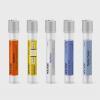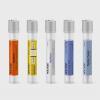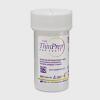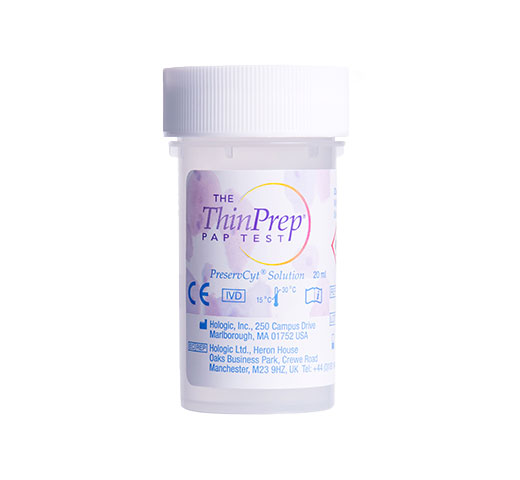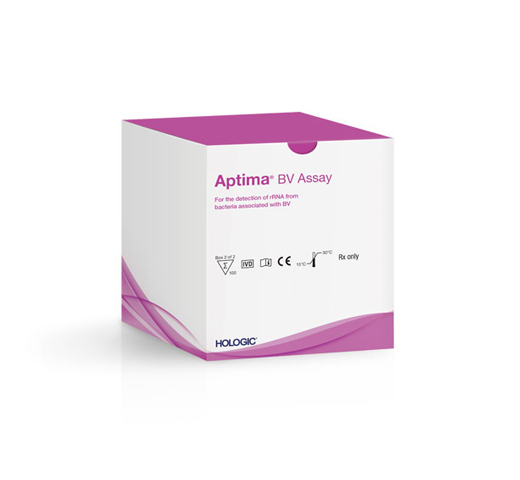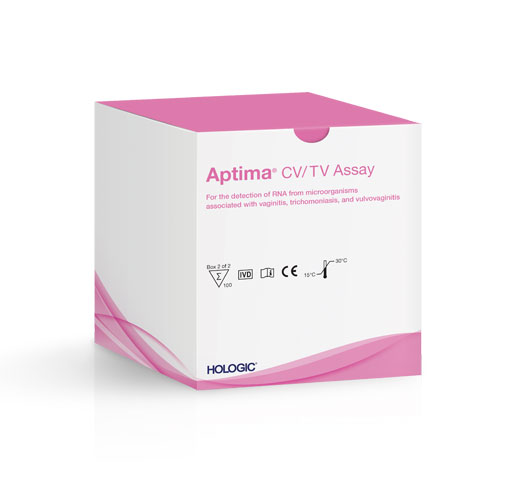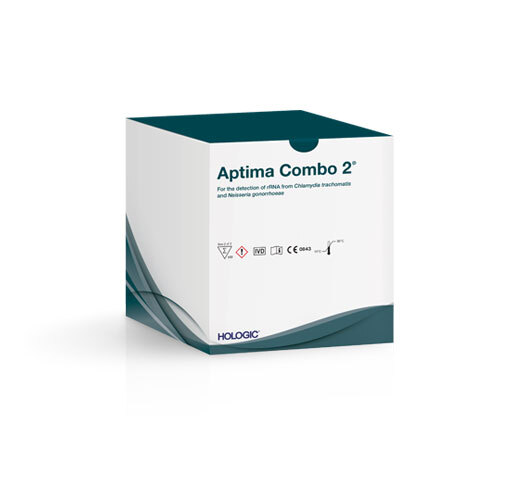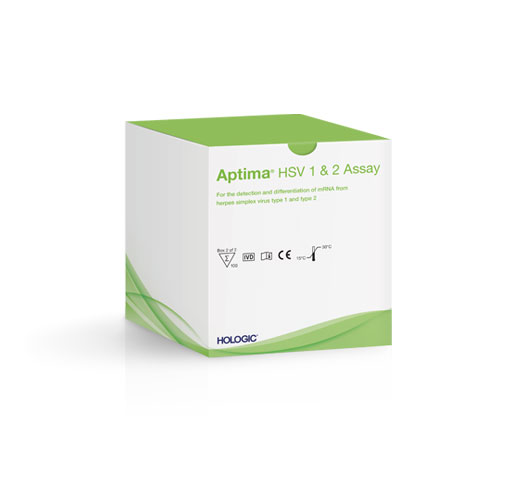Rapid fFN® Test
The Rapid fFN® test is a safe, reliable, and non-invasive test that can help providers determine a pregnant woman’s risk of delivering preterm.

Be Confident that Sending Her Home is the Right Decision
Improving women’s health is at the core of Hologic’s technology and products. One essential pillar in the Hologic Diagnostic Solutions portfolio is perinatal testing. The use of fetal fibronectin (fFN) testing can help reduce unnecessary admissions and hospitalizations and help direct care and resources to patients who need it most.
Symptoms May be Real, but the Risk is Not
When a patient has symptoms of preterm labour, it is important to determine her risk of preterm birth.1 Risk can be assessed by labour symptoms, such as uterine contractions, cervical change and premature rupture of membranes. However, these biophysical markers are not as accurate in predicting preterm birth as fetal fibronectin, a biochemical marker that can often be detected before the biophysical markers.2-4
Establish Risk
Approximately 80% of patients will get a negative result. A negative result means that patients have a less than 1% chance of giving birth in the next two weeks.5
Manage Care
Admit, observe or discharge? A negative result can help avoid unnecessary drug treatments, bed rest and hospitalizations. This knowledge can also provide peace of mind, freeing patients to continue with current activities without unnecessarily cancelling or rescheduling plans.6
Peace of Mind
Gives women at low risk of preterm labour peace of mind in knowing that they should not deliver early. For those at higher risk, you can reassure them that they are getting the right care.
Improving Patient Care is Within Your Control
For many women, the diagnosis and treatment of uterine disorders is a long, painful and frustrating journey. Our team pioneers gynecological, diagnostic and surgical solutions that give professionals greater confidence in patient diagnosis and more choice over treatment options.
The Rapid fFN Test is part of the Hologic Uterine Health Portfolio.

More Information & Less Guesswork
Fetal fibronectin (fFN) is a “glue-like” protein that helps bond the baby to the uterus. It is detectable in vaginal secretions at the beginning of pregnancy, when this bond is first forming, and then again at the end of pregnancy. If fetal fibronectin is detectable between 22 and 35+6 weeks in symptomatic women2, this could indicate the “glue” is leaking and preterm delivery is a real possibility. Between 18 and 27+6 weeks it is also possible to test asymptomatic women with a high-risk of preterm labour.2
Visit Our Virtual Hospital
See how our Uterine Health products work in an outpatient and operating room (OR) setting.

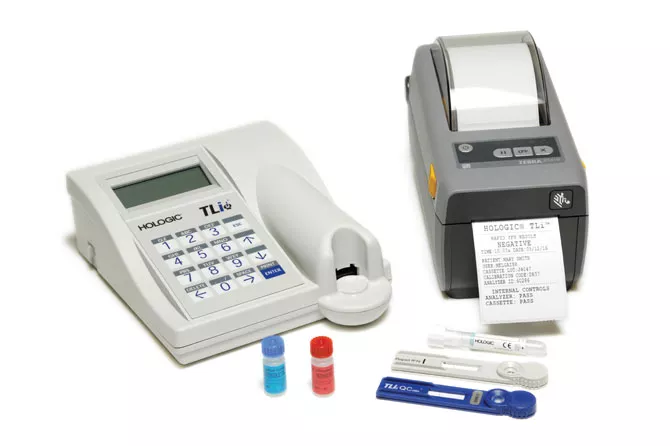
Running the Rapid fFN Test on the TLiIQ System
The Rapid fFN for the TLiIQ® system offers fast, easy, and convenient processing of samples for the detection of fetal fibronectin in vaginal secretions. The Rapid fFN for the TLiIQ system is an approved device for in-vitro diagnostic testing.6 The system offers multiple advantages that make it easy to incorporate testing into your clinical protocol.
Evidence. Insight. Collaboration.
Our education portal improves patient care through excellence in education, communication of clinical and scientific evidence, and partnerships with the healthcare community.
Insights
AW-24196-001_001 REV 001 – Rapid fFN for the TLiIQ System Information for Healthcare Providers
Wadhwa PD, Culhane JF, Rauh V, et al. Stress, infection and preterm birth: a biobehavioural perspective. Paediatric Perinat Epidemiol. 2001;15(suppl 2):17-29
Lockwood CJ, Kuczynski E. Risk stratification and pathological mechanisms in preterm delivery. Paediatric Perinat Epidemiol. 2001;15(suppl 2):78-89
Goldenberg RL, Iams JD, Mercer BM, et al. The Preterm Prediction Study: The value of new vs standard risk factors in prediction early and all spontaneous preterm births. Am J Public Health. 1998;88:233-38
Centers for Disease Control. Preterm Birth. https://www.cdc.gov/reproductivehealth/maternalinfanthealth/pretermbirth.htm. Updated June 26, 2017. Accessed May 21, 2020.
Rapid fFN for the TLiIQ System [package insert]. AW-24196-001, Rev. 001, San Diego, CA: Hologic, Inc.; 2020
Safety Data Sheets
Package Inserts
Frequently Asked Questions
Fetal fibronectin (fFN) is a “glue-like” protein that helps bond the baby to the uterus.
Fetal fibronectin is detectable in vaginal secretions in the very beginning of pregnancy, when this bond is first forming, and then again at the end of pregnancy, when the body is getting ready to deliver the baby. If fetal fibronectin is detectable in vaginal discharge between 22 and 35+6 weeks in symptomatic women1, this could indicate the “glue” is leaking prematurely and preterm delivery is a real possibility.
It is also possible to test asymptomatic women at high-risk for preterm labour between 18 and 27+6 weeks.1
Patients presenting with signs or symptoms of preterm labour are eligible to receive a Rapid fFN Test.1
These may include:2
- Contractions (your abdomen tightens like a fist) every 10 minutes or more often
- Change in vaginal discharge (leaking fluid or bleeding from your vagina)
- Pelvic pressure (feeling that your baby is pushing down)
- Low, dull backache
- Cramps that feel like your period
- Abdominal cramps, with or without diarrhea
There are studies to support the use of fFN testing in twins.
Asymptomatic patients at high risk for preterm birth can also receive a Rapid fFN Test.
Rapid fFN Testing is licensed for use between 22 and 35+6 weeks in symptomatic women and between 18 and 27+6 weeks in asymptomatic high-risk women.1
To determine a woman’s risk of preterm delivery in the next 7-14 days.1
Results can be useful when trying to determine whether to admit or transfer her and when to administer interventions such as antenatal corticosteroids, tocolysis and Magnesium Sulphate.
The specimen must be collected prior to other vaginal exams, without gels or lubricants.
- During speculum exam, lightly rotate swab across posterior fornix of vagina for 10 seconds to absorb cervicovaginal secretions.
- Remove swab and immerse polyester tip in buffer; break shaft at score even with top of tube.
- Align the shaft with hole inside the tube cap and push down tightly over shaft, sealing tube.3
It is important to note that the Specimen Collection Kit for the Rapid fFN Test is at no additional cost.
Therefore, if you are unsure prior to vaginal examination or additional tests whether any of the following apply, you can take your specimen and subsequently discard it if not required.
Contraindications:
- Cervical dilation more than 3cm
- Rupture of amniotic membranes
- Cervical cerclage
- Placenta previa
- Moderate or gross vaginal bleeding*
Precautions:
- Specimen contaminated with blood
- Sexual intercourse within the previous 24 hours
* Moderate or gross bleeding is an independent risk factor for preterm delivery and may be associated with other severe obstetrical or medical problems.
Presence of blood or semen in a Rapid fFN Test sample can sometimes lead to a falsely elevated result, however results under the specified threshold for treatment at your facility can still be considered valid in either of these situations.3
Yes, semen in a Rapid fFN Test sample can sometimes lead to a falsely elevated result, however results under the specified threshold for treatment at your facility can still be considered valid in this situation.3
Yes, blood in a Rapid fFN Test sample can sometimes lead to a falsely elevated result, however results under the specified threshold for treatment at your facility can still be considered valid in this situation.
It is important to note however that moderate or gross vaginal bleeding is both a contraindication and is an independent risk factor for preterm delivery and may be associated with other severe obstetrical or medical problems.3
Approximately 80% of patients will get a negative result allowing you to focus on the 20% that really are at the highest risk of preterm delivery.4
Total operator time is less than 60 seconds per test and the TLiIQ analyzer will return results in 30 minutes.3
The specimen can be stored at room temperature for up to 8 hours before testing or kept refrigerated for up to 3 days before testing.3
AW-24196-001_001 REV 001 – Rapid fFN for the TLiIQ System Information for Healthcare Providers
March of Dimes. Signs and Symptoms of Preterm Labor. https://www.marchofdimes.org/complications/signs-and-symptoms-of-preterm-labor.aspx. Reviewed August 2017. Accessed July 17, 2019.
Rapid fFN for the TLiIQ System [package insert]. AW-24196-001, Rev. 001, San Diego, CA: Hologic, Inc.; 2020
Centers for Disease Control. Preterm Birth. https://www.cdc.gov/reproductivehealth/maternalinfanthealth/pretermbirth.htm. Updated June 26, 2017. Accessed May 21, 2020.





